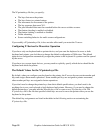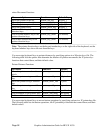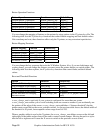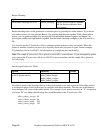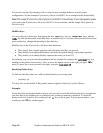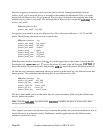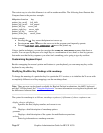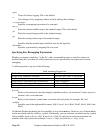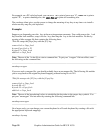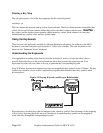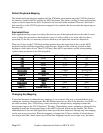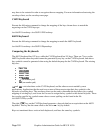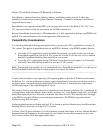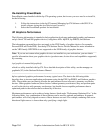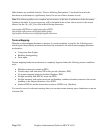
-quiet
Turns off verbose logging. This is the default.
-n
Lists changes to key mappings without actually making those changes.
-e <expression>
Specifies a remapping expression to be executed.
-pm, -p
Prints the current modifier map to the standard output. This is the default.
-pk
Prints the current keymap table to the standard output.
-pp
Print the current pointer map to the standard output.
-
Specifies that the standard input should be used for the input file.
<filename>
Specifies a particular key mapping file to be used.
Specifying Key Remapping Expressions
Whether you remap a single key "on the fly" with a command-line entry or install an entire new
keyboard map file, you must use valid expressions in your specification, one expression for each
remapping.
A valid expression is any one of the following:
Valid xmodmap Expressions
To do this... Use this expression...
Assign a key symbol to a keycode
keycode <keycode> = <keysym>
Replace a key symbol expression with another.
keysym <keysym> = <keysym>
Clear all keys associated with a modifier key.
clear <modifier>
Add a key symbol to a modifier.
add <modifier> = <keysym>
Remove a key symbol from a modifier.
remove <modifier> = <keysym>
keycode
Refers to the numerical value that uniquely identifies each key on a keyboard. Values may be in
decimal, octal, or hexadecimal.
keysym
Refers to the character symbol name associated with a keycode; for example, KP_Add.
modifier
Specifies one of the eight modifier names: Shift, Control, Lock, Mod1, Mod2, Mod3, Mod4, and
Mod5.
On Hewlett-Packard keyboards, the lock modifier is set to the
key. However, any of the modifiers
can be associated with any valid key symbol. Additionally, you can associate more than one key symbol
with a modifier (such as Lock = Shift_R and Lock = Shift_L), and you can associate more than one
modifier with a key symbol (for example, Control = Caps_Lock and Lock = Caps_Lock).
Graphics Administration Guide for HP-UX 10.20
Page 98



